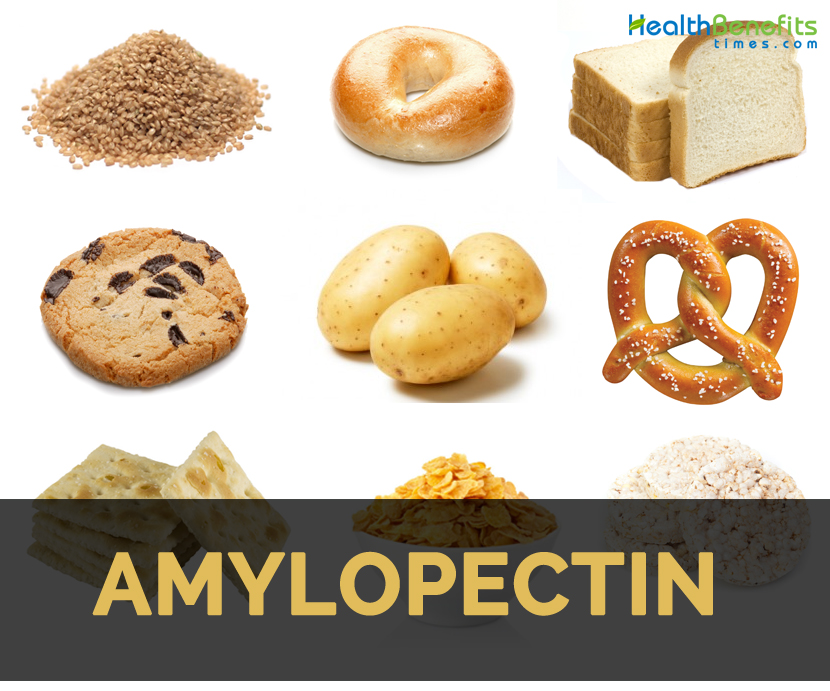 Amylopectin is a branched-chain polymer, which consists of o:-1,6-linked glucose units. Amylopectin is a highly branched chain and makes up the remaining 80% of digestible starches in the diet. Cellulose (a fiber) is another complex carbohydrate in plants. Although similar to amylose, it cannot be digested by humans, as discussed in the next section.
Amylopectin is a branched-chain polymer, which consists of o:-1,6-linked glucose units. Amylopectin is a highly branched chain and makes up the remaining 80% of digestible starches in the diet. Cellulose (a fiber) is another complex carbohydrate in plants. Although similar to amylose, it cannot be digested by humans, as discussed in the next section.
The enzymes that break down starches to glucose and other related sugars act only at the end of a glucose chain. Amylopectin, because it is branched, provides many more sites (ends) for enzyme action. Therefore, amylopectin is digested more rapidly and raises blood glucose much more readily than amylose.
Amylopectin is digested more rapidly in the body. Though the body easily digests most starches, a small portion of the starch in plants may remain enclosed in cell structures and escape digestion in the small intestine. Most of the plants form excess glucose. Individual glucose molecules are highly soluble in water and takes lot of space and move in or out of the cell. Starch molecules are insoluble in water and pack glucose molecules into relatively small space. It makes a good storage molecule for glucose. The chemical bond is broken easily to release sugars as a source of energy when required. Generally, amylopectin composes 75-80% of starch molecules of most plants with rest being composed of amylose.
Side effects
- Increase in blood sugar and insulin
Foods rich in amylopectin have high glycemic index which means it could promote blood sugar and insulin levels. Insulin is hormones which assist in delivering sugar from blood to tissues where it is utilized. High insulin level for long time period, it lowers effectiveness of insulin resulting insulin resistance and high blood sugar. Study conducted by feeding 12 participants diet composed of 70 percent amylopectin or amylose for five weeks. In comparison to amylose, amylopectin resulted greater increase in insulin and blood sugar levels. Other study shows that high amounts of amylose slowed carbohydrate digestion or absorption and caused lower blood sugar and insulin levels.
- Increment in cholesterol
Diet rich in amylopectin has negative impact on level of blood cholesterol. Research has shown that consumption of foods having higher glycemic index such as those with high amylopectin could lower triglyceride and good HDL cholesterol levels. Study shows that insulin resistance could occur as a result of high glycemic diet which is related with increase in production of cholesterol. Study shows that intake of diet rich in amylopectin could led to promote in cholesterol or triglyceride levels in comparison to diet rich in amylose. Animal studies show that resistant starch from high concentrations of amylose could result low blood cholesterol and triglyceride concentration in rats.
- Increase belly fat
Amylopectin has visible effect on waistline. It is due to intake of lots of amylopectin could promote insulin resulting to increase in visceral fat. Insulin has a crucial role in fat storage or metabolism. It disrupts breaking down of fat and increment in uptake of triglycerides from blood into fat cells. High levels of circulating insulin could cause insulin resistance as well as hike in triglycerides from blood into fat cells. High insulin levels could cause insulin resistance, increase in storage of fat and reduction in fat burning. Study shows that amylose and resistant starch could promote burning of fat, enhance satiety and lowers fat storage.
Food Sources of Amylopectin
- Short-grain rice
- Bagels
- White bread
- Cookies
- White potatoes
- Pretzels
- Crackers
- Instant oatmeal
- Cornflakes
- Puffed rice
- Rice cakes
References:
https://en.wikipedia.org/wiki/Amylopectin
